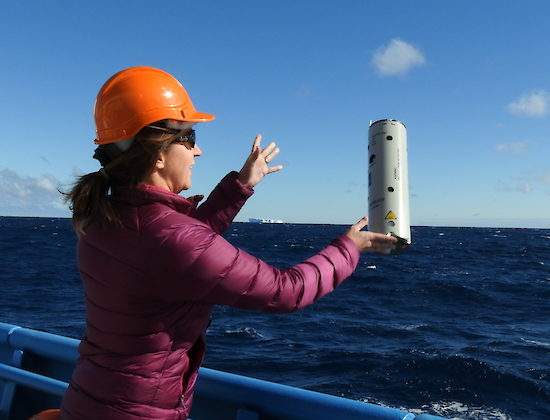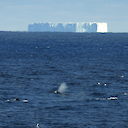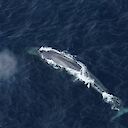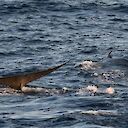Homing in on big blue
Antarctic blue whales are rare and sparsely distributed across the vast Southern Ocean, so finding them can be a challenge.
The ENRICH voyage on CSIRO research vessel Investigator is mastering the use of sonobuoys. These are underwater microphones that once thrown overboard, send acoustic data back to the ship via radio.
To date, 250 sonobuoys have been deployed throughout the voyage to detect the low frequency calls of Antarctic blue whales and the directions they’re coming from.
So far they’ve monitored over 750 hours of underwater recordings and measured 32,480 bearings to blue whale calls.
This enables scientists to home in on the whales for further study using photography, drones, video tracking, and water sampling, and to investigate predator-prey relationships.
By using acoustic tracking to direct the ship to Antarctic blue whale aggregations, 43 sightings have been recorded to date. One whale was tracked for over 40 nautical miles.
The acoustic data can be used to study the behaviour of blue whales, and sighting data can be compared to whales seen on previous voyages.
ENRICH stands for 'Euphausiids (krill) and Nutrient Recycling In Cetacean (whale) Hotspots'
This research is part of the Australian Antarctic Program, managed through the Science Branch of the Australian Antarctic Division, and supported by a grant of sea time on RV Investigator from the CSIRO Marine National Facility.






